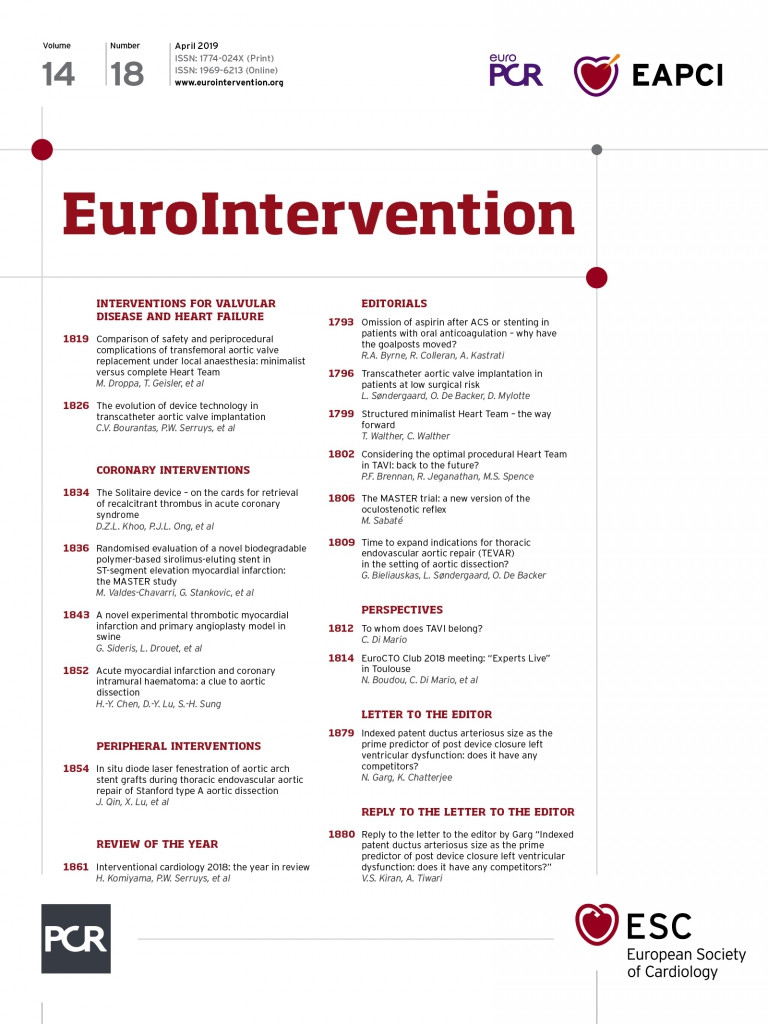
In their study, Kiran et al propose the indexed patent ductus arteriosus (PDA) size at the pulmonary artery end as a simple predictor of post-procedural left ventricular (LV) dysfunction in those with baseline normal LV function1. Whilst we agree with the authors’ observation that the size of the PDA is an important prognostic marker, it is not uncommon to find a PDA where the diameter at the pulmonary artery end is not the minimum diameter. In such cases, the minimum PDA diameter indexed to body surface area may be an appropriate measure. Although this is by far the largest published group and a commendable effort, we believe that methodological gaps prevent this study from establishing the indexed PDA size as a more robust predictor.
The authors consider a univariate model and show a significant correlation between indexed PDA size and post-procedural LV dysfunction. We are curious to know whether this would stand up as an independent predictor in a multivariate model. Previous studies have been limited by their small sample size but have made some important observations. Gupta et al showed that baseline LV ejection fraction, LV end-diastolic volume and PDA diastolic gradient predicted post-procedural LV dysfunction2. Jeong et al showed that device closure should be carried out before left ventricular ejection fraction (LVEF) decreases to less than 62% in order to have a normal post-closure EF3. Pre-closure global longitudinal strain (GLS) predicted LV dysfunction measured as increased myocardial performance index (MPI)4. A larger left to right shunt and higher pulmonary artery pressure pre-closure is also associated with LV dysfunction estimated by fractional shortening5. Both LVEF and MPI are load-dependent measures of LV function. During “afterload mismatch” in the immediate post-closure period, isovolumic acceleration (IVA) would be a better measure of LV function. Age at the time of procedure is also a plausible predictor of LV dysfunction2.
Including all these variables along with indexed PDA size in a multivariate model would allow us to extract maximum inference from the large study population in this article. Distribution of the baseline variables across the four pre-specified groups should also be made available.
We hope that our suggestions would help in interpreting the study data further and possibly generate further new hypotheses.
Conflict of interest statement
The authors have no conflicts of interest to declare.

